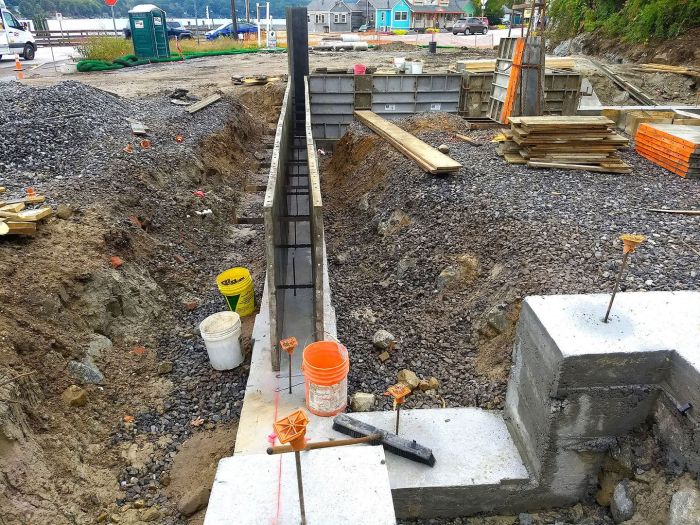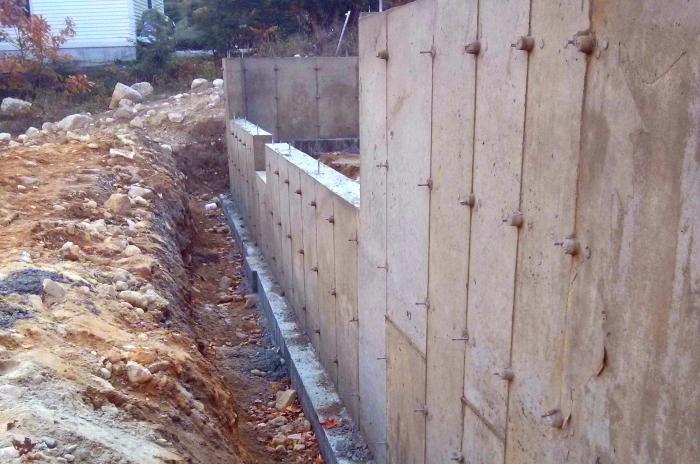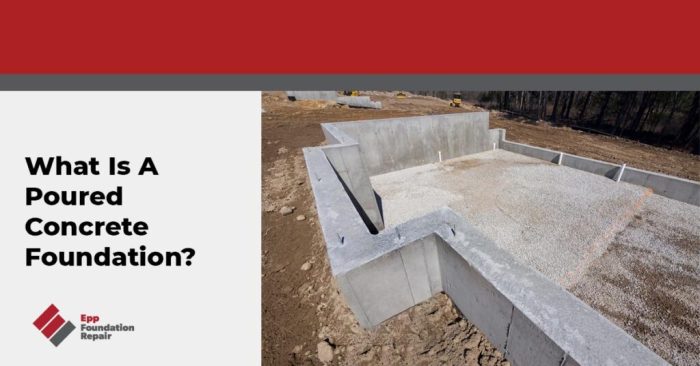The requirement for a freshly poured foundation is a crucial aspect of construction that ensures the stability and longevity of any structure. Understanding the essential components, soil conditions, and construction techniques involved in this process is paramount for achieving a solid and reliable foundation.
This comprehensive guide will delve into the intricacies of foundation requirements, providing valuable insights into the step-by-step pouring process, necessary inspections and testing, potential issues and solutions, environmental considerations, and sustainable practices. By equipping readers with this knowledge, we empower them to make informed decisions and ensure the integrity of their foundations.
Foundation Requirements

Establishing a solid foundation is crucial for any construction project. This involves assessing soil conditions, selecting the appropriate foundation type, and ensuring proper installation. Understanding these requirements ensures the structural integrity and longevity of the building.
Soil Testing and Site Preparation
- Conduct thorough soil testing to determine soil composition, bearing capacity, and drainage characteristics.
- Prepare the site by clearing vegetation, removing debris, and grading the surface to ensure proper drainage.
Foundation Types
- Spread Footings:Suitable for stable soils and low-rise structures, distributing weight evenly across the soil.
- Continuous Footings:Used for heavier structures, providing continuous support along the length of the wall.
- Pier and Beam Foundations:Ideal for unstable soils or elevated structures, consisting of piers driven into the ground and beams connecting them.
Pouring Process

Pouring a foundation requires meticulous planning and execution. This involves selecting materials, preparing the forms, and ensuring proper placement and curing.
Materials and Equipment
- Concrete: Select the appropriate concrete mix based on the foundation design and soil conditions.
- Forms: Construct sturdy forms to contain the concrete during pouring.
- Reinforcement: Use steel reinforcement to enhance the strength and durability of the foundation.
Concrete Placement
Pour the concrete into the forms in layers, consolidating each layer to eliminate air pockets. Ensure proper leveling and alignment using surveying equipment.
Curing Process
After pouring, the concrete must be cured to gain strength. Protect the foundation from the elements by covering it with plastic sheeting and keeping it moist. Curing time varies depending on temperature and humidity.
Inspections and Testing: The Requirement For A Freshly Poured Foundation

Regular inspections and testing are essential to ensure the quality of the foundation. These include:
During Pouring
- Slump Test:Measures the workability of the concrete.
- Air Content Test:Checks for excessive air entrainment.
After Pouring, The requirement for a freshly poured foundation
- Visual Inspection:Examines the surface for cracks, voids, or honeycombing.
- Compressive Strength Test:Determines the strength of the cured concrete.
Common Issues and Solutions

Potential issues during or after foundation pouring include:
Cracking
Causes:Settlement, temperature changes, excessive loading.
Solutions:Repair cracks with epoxy injection or sealants; reinforce the foundation to prevent further settlement.
Settlement
Causes:Weak soil, inadequate compaction, excessive weight.
Solutions:Reinforce the foundation, install piers or pilings, or remove excess weight.
Water Infiltration
Causes:Poor drainage, cracks, faulty waterproofing.
Solutions:Install drainage systems, repair cracks, and apply waterproofing membranes.
Environmental Considerations
Foundation construction can impact the environment. Minimizing these impacts includes:
Erosion Control
- Install erosion control measures such as silt fences or straw bales.
- Re-vegetate the site after construction to stabilize the soil.
Water Conservation
- Use low-water-content concrete mixes.
- Capture and reuse rainwater for curing or other purposes.
Waste Management
- Dispose of concrete waste properly at designated landfills.
- Recycle steel reinforcement and other materials.
Clarifying Questions
What are the essential components of a freshly poured foundation?
The essential components include soil testing, site preparation, formwork, reinforcement, and concrete.
Why is soil testing important for foundation design?
Soil testing determines the soil’s bearing capacity, composition, and drainage characteristics, which are crucial for selecting the appropriate foundation type and design.
What are the different types of foundation designs?
Common foundation types include shallow foundations (e.g., footings, slabs) and deep foundations (e.g., piles, piers).
What are the steps involved in the concrete pouring process?
The steps include preparing the formwork, placing the reinforcement, mixing and pouring the concrete, and curing the concrete.
What are the common issues that can arise during foundation construction?
Common issues include settlement, cracking, and water infiltration, which can be addressed through proper design, construction techniques, and maintenance.